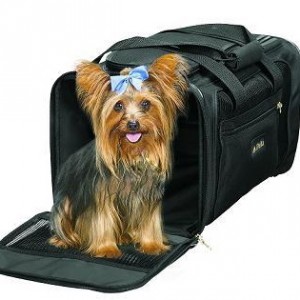Moving Abroad with Your Pet
 Kat from Oregon writes in to ask:
Kat from Oregon writes in to ask:
“I have the opportunity to move overseas but I don’t want to leave my pet behind. What are the laws about moving pets overseas?”
Laws will vary from country to country and may vary depending on your type of pet. Start your research as soon as possible. You may need to work on some tasks as early as six months or more before you leave.
Do a Google search.
Google will turn up lots of tips and suggestions from people who have done this before you.
Contact the consulate of the country where you will be moving.
The consulate will tell you if bringing your pet to their country is possible, and if it is then they can give you current information, laws and regulations (required injections for your pets, quarantine information and location of quarantine facility, documents needed, breed restrictions, fees, and microchip requirements).
Make an appointment with your vet.
As soon as you have all the above information, make an appointment with your vet. You will need to check that your pet is healthy enough to travel. Your vet can also provide the vaccines, record/documents, and microchip and advise you on reducing travel stress for your pet. Your vet can possibly also advise you on a safe and regulation travel carrier, and information about vets in your host country.
Travel
You don’t mention which country you are moving to. Whether you decide to fly or drive to your host country, there will be different regulations for pet safety.
If you drive you must understand the laws of each country you drive through. Some countries require pets be in a carrier while in a moving vehicle. Some require a metal grille in the back to prevent the pet from getting into the seating area.
Stop every couple of hours to give your pet exercise, fresh air, a toilet break, and water.
If you fly to your new home airlines require you to use an IATA (International Air Transport Association) approved pet carrier. The IATA Live Animals Regulations hold specified standards for carriers for every size of animal.
Sometimes small dogs and cats can travel in the cabin with you. Usually your pet will fly in the category ‘special baggage’ in a heated and ventilated part of the hold, where their pet carrier can be secured safely. Although you may wish they could be with you, the hold is darker and quieter and may be less stressful for your pet.
As airlines will vary regarding policies and contingency plans, it is important to clarify certain points such as: identification on pet carriers, What happens to the pet if the flight is rerouted, where are pets checked in, and necessary documents.
Top tips:
Attach a photo of your pet to the pet carrier, to the travel documents and keep one with you with a copy of any travel documents that you have had to hand over.
Put a collar or harness on your pet with ID tags with your contact details.
Don’t sedate your pet. If you are worried about your pet becoming anxious, speak with your vet for options.
For long haul flights, freeze water in a plastic water bowl so that it melts slowly through the day as the pet becomes thirsty—this prevents spills.

Great tips! People who are moving overseas with pets can also look into hiring a pet relocation service to help with their move.
PetRelocation.com provides door-to-door pet transportation and travel services for pets worldwide. This allows pet owners to safely get their pets to your their home without the stress.